Clamp meters also known as clamp-on ammeter are instruments used to measure the current that flows through a conductor. There are AC and DC clamp meters. The AC meter is the best clamp meter and has a current transformer in its jaws. On the other hand, the DC clamp meter uses a Hall Effect sensor to measure the current.
The hinged jaw which is integrated into an electrical meter enables technicians to clamp cables, wires, and other conductors to measure current in the circuit without the need to deenergize or disconnect the wires.
The hard jaws are encased with plastic mouldings beneath which there is ferrite iron. The jaws are engineered in such a way as to detect, concentrate, and measure the presence and strength of the magnetic field that is generated by the current as it flows through the conductor.
Popularity and Usage of Clamp Meters
- Safety – Clamp meters enable you to bypass the traditional method of cutting into wires so that you can test and measure an inline current. Using the jaws of the clamp meter, you can clamp onto the wire or conductor without even touching it.
- Convenience – When taking a measurement, you do not have to shut off the circuit that carries the current and this gives a big boost to you in terms of efficiency.
The primary use of clamp meters is for installation, service, and maintenance. When troubleshooting installation problems and performing final circuit tests, clamp meters come in handy.
Common Types of Clamp Meters
There are 3 main types of clamp meters consisting of:
- Current transformer clamp meters
- Hall Effect clamp meters
- Flexible clamp meters
1. Current Transformer Clamp Meters
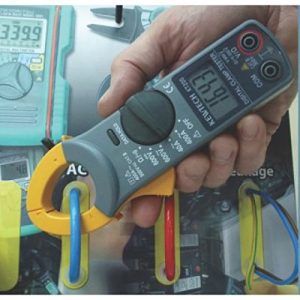 These clamp meters are designed to measure alternating current only. They are equipped with ferrite iron rigid jaws wrapped with copper wire coils. The iron and the copper wire form a magnetic core that activates into a magnetic field during measurements.
These clamp meters are designed to measure alternating current only. They are equipped with ferrite iron rigid jaws wrapped with copper wire coils. The iron and the copper wire form a magnetic core that activates into a magnetic field during measurements.
This is arguably one of the best clamp meter and works much like a transformer. The coils around the jaws work in the same way as the secondary winding of the transformer. When current flows through the conductor, it generates a magnetic field which rotates around the conductor. The clamp’s iron core concentrates the field and induces a current flow in the secondary windings in the meter.
The clamp meter essentially measures the amount of magnetic field that passes through the conductor also known as magnetic flux.
2. Hall Effect Clamp Meters
These meters can measure AC as well as DC currents. Just like their current transformer counterparts, Hall Effect clamp meters concentrate the magnetic field using their rigid iron jaws. The magnetic field forms around conductor being that is being.
The point of departure in design between the Hall Effect and current transformer clamp meters is that the jaws of the former are not wrapped by coper wires. When the jaws are clamped around the conductor, the magnetic field generated is focused across the gaps in the core.
The gaps form where the tips of the jaws of a Hall Effect clamp meter meet. The air pocket created necessitates the magnetic flux to jump. Because of the gaps, magnetic flux is limited preventing the core from saturating.
In the gap, there is a semi-conductor encased by plastic molding known as a Hall Effect sensor. The purpose of this sensor is to measure the magnetic flux directly.
3. Flexible Clamp Meters
These meters come in various names including air-cored coils, Rogowski coils, and flexible current probes. These clamp meters have no iron core, but instead use a helix-shaped coil that responds to the rate of change of the magnetic field around the conductor.
The rate of change in amplitude is directly proportional to the voltage generated by the coil. There is an integrator circuit within the clamp meter that converts the output to a signal which is proportionate to the signal in the conductor.
What makes Rogowski coils the best clamp meter is that they can easily fit into clamped spaces because they are dependent on a rigid iron core. This is a valued attribute of these meters.
- Read also: Best Voltage Tester Reviews
What to Consider When Buying a Clamp Meter
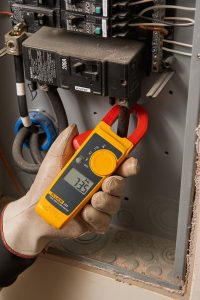 Purchasing a clamp meter can be a challenging decision bearing in mind the varieties in the market and the price considerations. However, the following pointers can help you in making up your mind on what to go for.
Purchasing a clamp meter can be a challenging decision bearing in mind the varieties in the market and the price considerations. However, the following pointers can help you in making up your mind on what to go for.
1. Accurate and Repeatable Results
A clamp meter ought to give you true rms readings. When the readings are wrong, it puts you in a difficult position because you don’t know whether it is the clamp or the motor that is erroneous. The meter you buy should work for you and not against you.
Ensure that the clamp meter meets the industry standard for accuracy which is 2% ±5. Accuracies of ±10 can give you twice the error especially when measuring low currents.
2. Ability to Work in Different Conditions
It is one thing for the clamp meter to work in the laboratory and another to work in the field. The accuracy levels you enjoy in the lab may not be sustained out in the field. When looking for a clamp meter, check whether they can work in the environment you want them to. For instance, when looking for a meter for outdoor measurements, do not buy one that is specified for indoor use only or that which has a minimum operating temperature range of 15 Fahrenheit.
3. Safety
The clamp meter you choose should be in the appropriate category rating as the work you are doing. Check the reputation of the brand as far as safety and reliable tests is concerned. Good clamps are those tested by the manufacturer to ascertain their compliance with the safety standards.
4. Ease of Battery Replacement
On average two AA batteries will last your clamp meter 150 hours of operating time. Go for meters that use standard alkaline batteries. These batteries do not require a recharge and they are inexpensive to replace.
The Best Clamp Meter Reviews
1. FLUKE 323 True RMS Clamp Meter
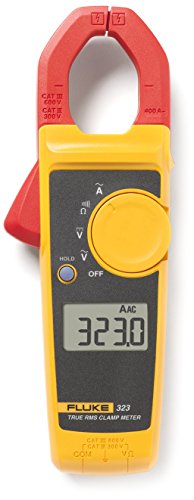
This clamp meter is used for general troubleshooting measurements. It is not only among the best clamp meter available but is also versatile and can be used both for commercial and residential applications. Using this equipment, you can measure current flows going all the way up to 400 amperes even in tight compartments.
- It features a slim ergonomic construction for ease of handling during measurements
- It has a safety rating of Cat III 600V/Cat IV 300V
- It can undertake resistance measurement of up to 40 kΩ complete with continuity detection
- It can also measure up to 600 volts AC and DC currents
With this clamp meter, you can be assured of accurate voltage and current measurements on non-linear signals.
2. Extech EXT380976 K Clamp Meter
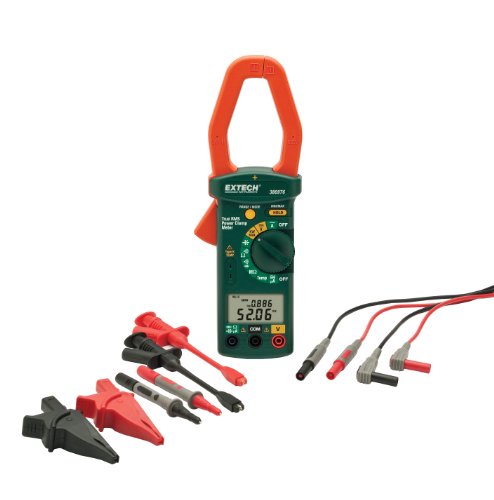
This clamp meter measures temperature, current resistance, and power. Through simultaneous frequency display, the clamp meter can autodetect DC/AC voltage measurements.
- It features a clamp jaw opening coupled with a dual LCD display to show you clear measurements
- It measures apparent power, true power, reactive power, power factor, and horsepower
- It can carry out high resistance tests stretching to 100 mΩ
- With this clamp meter, you can undertake diode and continuity tests
The meter is protected by reinforced insulation as part of the safety provisions. The display is 4 digit and goes from 0 to 9999.
3. Kewtech KT200 Digital Clamp Meter
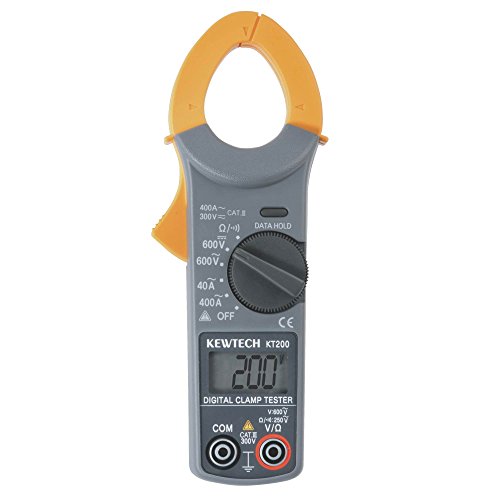
This meter is simple to use and can measure current flows of up to 400 amperes and voltages going all the way to 600 volts. If you want a clamp that can measure continuity and resistance levels, this is the best clamp meter.
The jaws are 33mm in width and this makes them large enough to clamp a variety of applications. When measuring continuity, the meter has an integrated buzzer that alerts users in case of continuity problems.
- It has a display of up to 4000 counts
- It has a data hold memory function
- It complies with the safety standards UL3111 and IEC61010-1
It also has 0.01A accuracy below 40A and this means that it can measure up to 10mA.
4. Megger 1000 304 DCM320 Clamp Meter
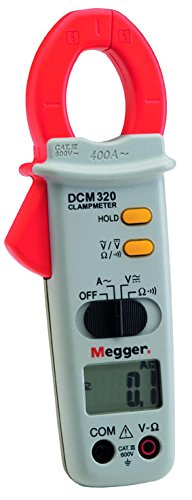
The DCM320 is an ideal meter for maintenance, electrical inspection and installations. It is designed in such a way that you can handle with ease. It measures approximately 522 grams and this makes it an easy to carry equipment.
- You can measure AC current flow up to 400A
- It is designed and tested for Cat III 600V safety standards
- It measures up to 600V DC/AC voltage
- It has an exceptional battery lifetime
The jaws of DCM320 measure up to 27mm in diameter. This helps you to cover majority of applications in the installation industry.
5. Metrel MD 9210 Current Clamp Meter
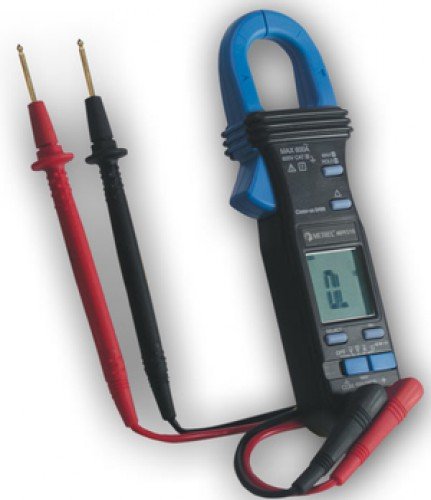
This is a universal current clamp that gives you real value for money. Its readings are highly accurate and it can undertake lots of measurement functions.
- It can measure AC and DC voltage ranging up to 600 volts
- It also measures AC current flow of up to 600 amperes
- It can undertake resistance measurement, diode test, and continuity test
- Its large LCD display has up to 4000 count
- It comes with a data hold memory function
- For continuity test, it gives acoustic signaling
The jaw opening is 26mm in diameter and this means you can use this meter for a wide range of installation and maintenance functions. It is also Cat III/600V safety rated, making it one of the best clamp meters.

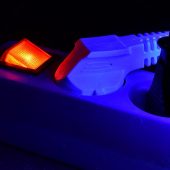
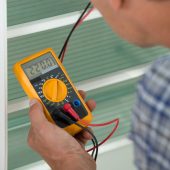
Hello Sales,
We are looking to purchase multiple units of the product below:
CLAMP METER 1000A 4,000 COUNT AC/DC
COUNT CLAMP METER 1000A AC TRUE RMS 4000
FLUKE METER 376FC
FLUKE 1550C
A high quality clamp meter with an excellent accuracy and safe and easy to use, that’s how I define Fluke 323 based on my experience as a technician.